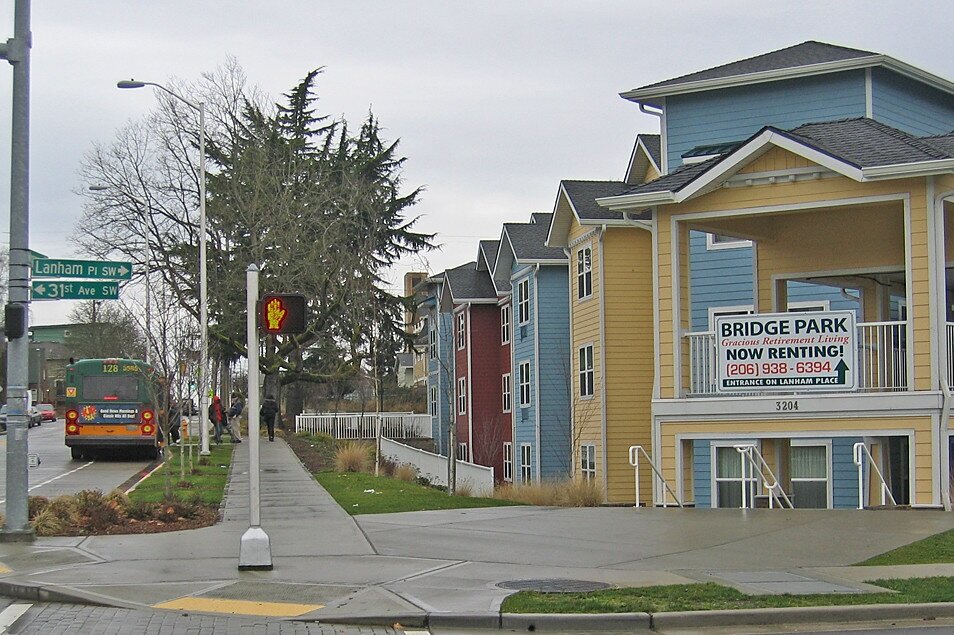Access to Health Care & Other Services
Why should we plan for health care access?
Seeing the doctor regularly helps us stay healthy.1 Doctors help people manage diseases like diabetes and heart disease. They can also help prevent some diseases from happening at all. When people have a hard time seeing their doctor regularly, they are more likely to end up in the hospital.2 Many things can make it difficult for someone to see a doctor when they need to. There may not be a clinic or health office in their neighborhood.3 Getting to and from appointments can be difficult for some people.
Urban, regional, and community planners can help increase access to medical care. They can work with health care organizations to assess where clinics are located. They can form partnerships to build clinics where there are shortages. They can also make sure that public transportation systems are in place for people to get to and from clinics. Planners can help ensure that everyone in their community has access to the medical care they need.
best practices for urban & Suburban Comprehensive Plans
Click the plus sign (+) to see more information about that best practice.
+ Include data on the number of health and human service outlets available to populations in need in the jurisdiction
- Include maps and/or data that clearly identify where there is a gap in access to health care.
+ Work with relevant state agencies to improve access of all residents to health care and wellness services
- Clearly identify specific partners and a planned collaboration and goals to improve access to health care and wellness services.
+ Include specific policies, objectives, or goals that enable older residents to age in place (i.e. that enable them to maintain mobility and access to services within the community)
- Examples of strategies that allow residents to age in place include:
- Allowing accessory dwelling units (ADUs) in appropriate locations
- Encouraging communities with life-cycle housing
- Siting senior housing close to services like parks, downtown retail, health care, and public transportation
- Providing loans to make homes accessible and age-friendly
+ Support intergovernmental collaboration that ensures mobility and seamless access to services between jurisdictions
- Use specific collaborative measures such as Memoranda of Agreement with municipal and state entities.
Small town governments can work with neighboring towns and statewide entities to provide recreation opportunities. Photo: Elroy-Sparta trail. Credit: sfgamchick.
Planners can work with health care providers to build clinics where they are easily accessible to the community. Photo: Harvard, IL. Credit: Don Shall.
Planners should ensure that senior housing it integrated in the community with access to services like public transportation, health care, and community centers. Photo: Seattle, WA. Credit: Brett VA.
Best Practices for Rural Comprehensive Plans
Click the plus sign (+) to see more information about that best practice.
+ Work with relevant state, regional, or county agencies to improve access of all community members to health care and wellness services
- Identify specific partners and a planned collaboration to improve access to health care.
+ Require intergovernmental coordination to connect/share trails, transportation, recreation opportunities, and other services across jurisdictional boundaries
- Coordinate with other governmental agencies on specific transportation or service provision projects.
Resources
American Planning Association resource libraries on building age-friendly communities:
REFERENCES
Starfield B, Shi L, Macinko J. Contribution of Primary Care to Health Systems and Health. The Milbank Quarterly. 2005;83(3):457-502. doi:10.1111/j.1468-0009.2005.00409.x
Bindman AB, Grumbach K, Osmond D, et al. Preventable Hospitalizations and Access to Health Care. JAMA. 1995;274(4):305-311. doi:10.1001/jama.1995.03530040033037
Harrington DW, Wilson K, Bell S, Muhajarine N, Ruthart J. Realizing neighbourhood potential? The role of the availability of health care services on contact with a primary care physician. Health & Place. 2012;18(4):814-823. doi:10.1016/j.healthplace.2012.03.011
Syed S, Gerber B, Sharp L. Traveling Towards Disease: Transportation Barriers to Health Care Access. Journal of Community Health. 2013;38(5):976-993. doi:10.1007/s10900-013-9681-1
Kullgren JT, McLaughlin CG, Mitra N, Armstrong K. Nonfinancial Barriers and Access to Care for U.S. Adults. Health Serv Res. 2012;47(1 Pt 2):462-485. doi:10.1111/j.1475-6773.2011.01308.x





